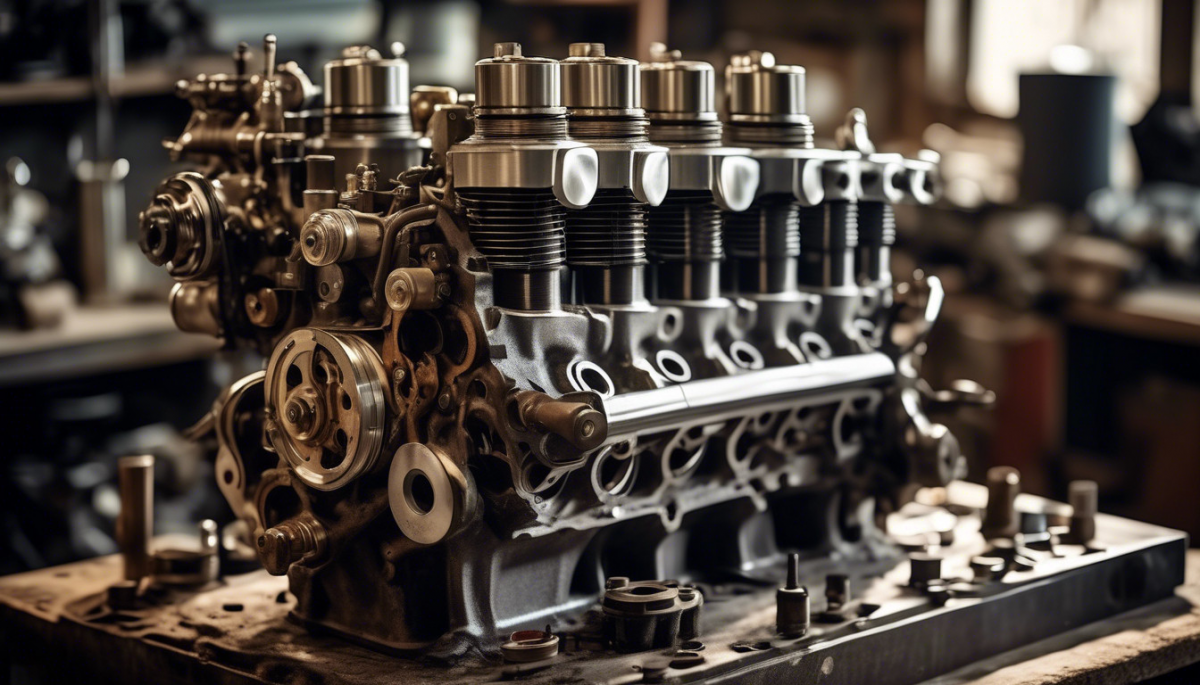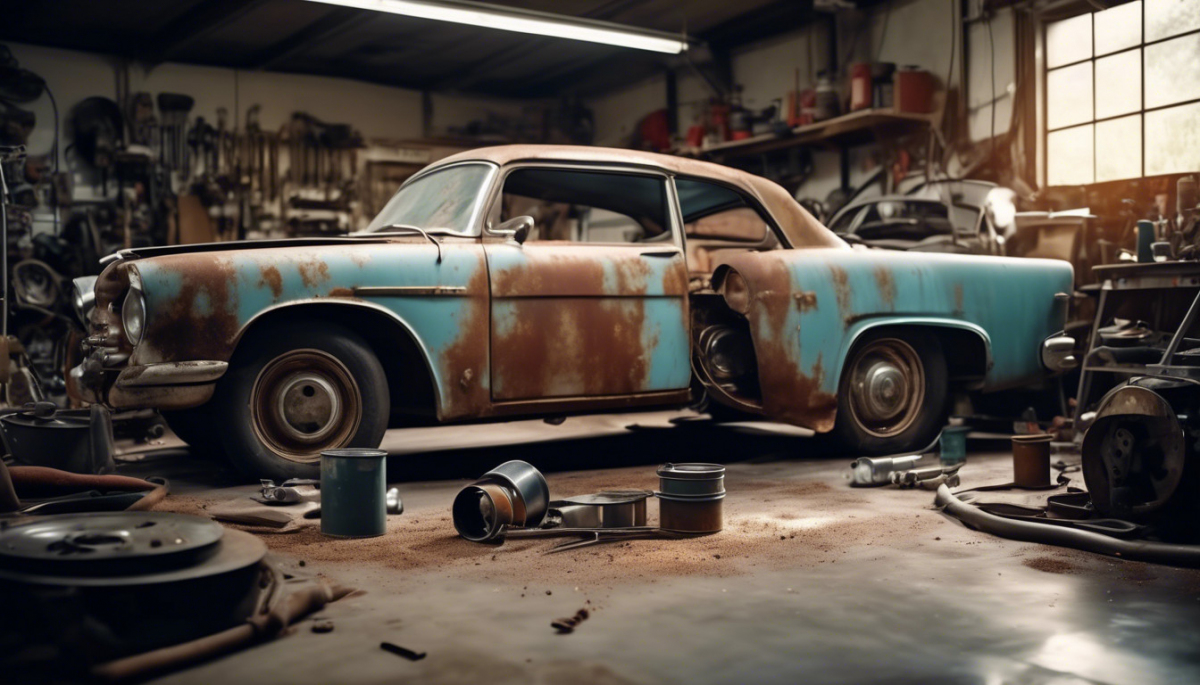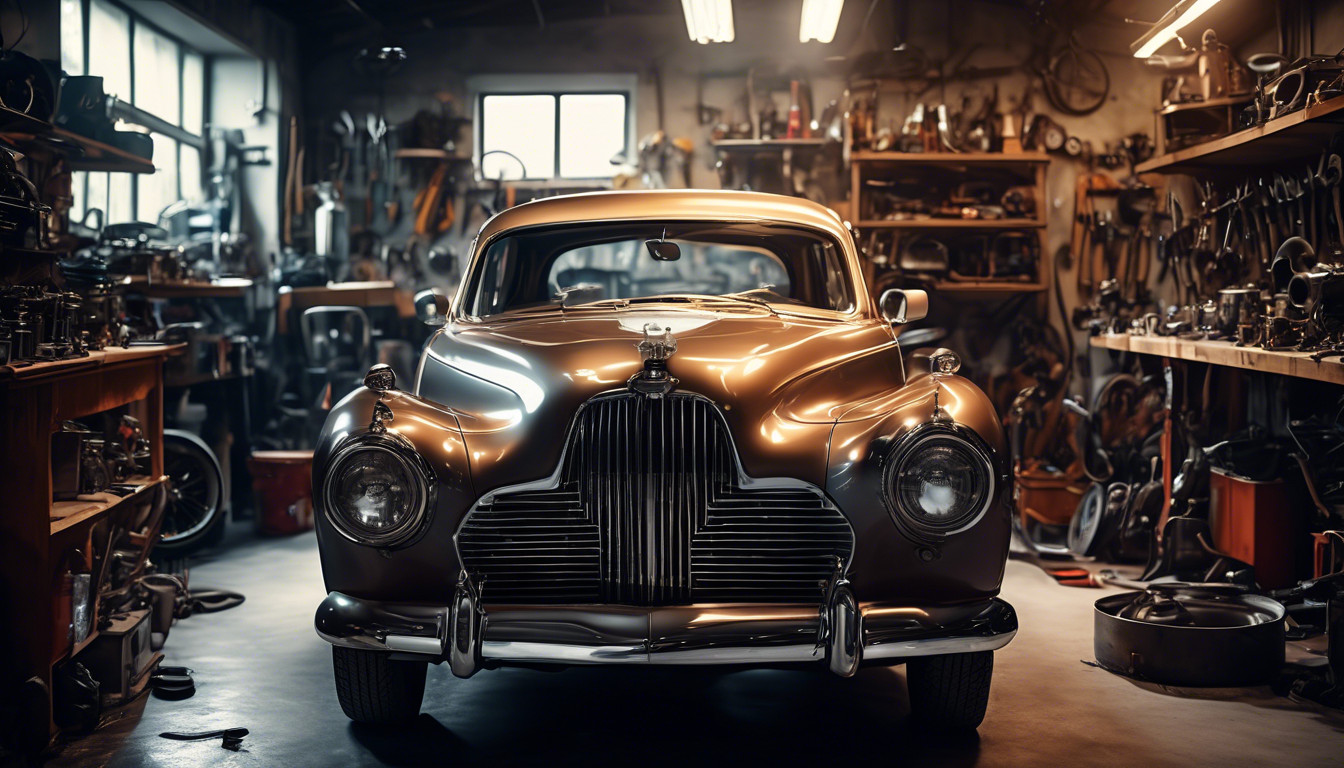Restoring a vintage car to its former glory is a meticulous process that combines technical skill, historical knowledge, and passionate dedication. This endeavor involves not only the revival of a vehicle’s aesthetic appeal but also the restoration of its mechanical functionality, ensuring that the car performs as it did in its heyday.
The restoration process begins with:
-
Comprehensive Assessment:
- Evaluate the vehicle’s current condition.
- Identify areas that require attention, such as the engine, chassis, bodywork, and interior.
-
Sourcing Authentic Parts:
- Conduct extensive research.
- Network within the classic car community to find original parts.
-
Understanding Historical Context:
- Maintain the car’s authenticity by adhering to its original specifications.
- Gather knowledge about the car’s historical background.
Throughout the restoration, careful attention to detail is crucial. A methodical approach to restoring each component ensures that the vehicle maintains its original charm and functionality.
This guide serves as a roadmap for enthusiasts and professionals alike, detailing the necessary steps and considerations for a successful vintage car restoration.
Initial Disassembly and Documentation
Begin the Restoration Process
-
Careful Disassembly: Start by meticulously disassembling the vintage car. This step is crucial for preserving the vehicle’s integrity and lays the foundation for a successful restoration.
-
Thorough Documentation: Ensure all components are thoroughly documented. This detailed documentation will serve as a critical reference for each component’s original placement and condition, aiding future stages such as engine rebuild and bodywork.
Organization and Inventory
-
Organize parts systematically during disassembly. This not only enhances the restoration experience but also fosters a sense of belonging among enthusiasts who value meticulous attention to detail.
-
Label each part and create a comprehensive inventory. This will facilitate the reassembly process and ensure that no piece is misplaced or overlooked.
Importance of Initial Steps
The success of subsequent tasks, such as engine rebuild and bodywork, heavily depends on the thoroughness of this initial disassembly phase. A structured approach prevents future complications and reinforces the shared passion for vintage automobiles within the restoration community.
Mechanical Restoration and Engine Rebuild
Mechanical Restoration Process
Mechanical restoration often begins with assessing the engine’s condition to identify components requiring repair or replacement. A thorough inspection ensures that the restoration process addresses all mechanical deficiencies.
Inspection and Disassembly
- This step involves disassembly, where the engine is carefully taken apart.
- Internal components such as pistons, cylinders, and crankshafts are examined for wear and damage.
- Each component is evaluated to determine if refurbishment or a complete engine rebuild is necessary.
Engine Rebuild
An engine rebuild involves replacing or restoring faulty parts to bring the engine back to optimal performance. Precision and attention to detail are crucial during this stage to ensure that the engine functions reliably and efficiently.
The rebuild process often includes:
- Honing cylinders
- Replacing bearings and seals
- Ensuring all parts meet manufacturer specifications
Integration and Finalization
Once the engine’s mechanical components have been restored, attention shifts towards integrating these with the vehicle’s existing systems.
A successful mechanical restoration provides a solid foundation, aligning with the subsequent bodywork phase to ensure the vehicle’s comprehensive revival.

Bodywork and Paint Restoration
A meticulous approach to restoring a vintage car’s exterior begins with evaluating the condition of the body to identify areas requiring repair or refinishing. This involves:
- A detailed inspection
- Often necessitating partial disassembly to reveal hidden damage or corrosion
The engine rebuild phase previously completed ensures that attention can now be fully directed towards bodywork.
Repairing dents, rust, and structural imperfections is essential for restoring the car’s integrity and aesthetics. High-quality materials and techniques should be employed to ensure authenticity and longevity.
Once the bodywork is complete, the focus shifts to paint restoration. Selecting a color and finish that reflect the vehicle’s original specifications fosters a sense of historical accuracy and belonging among enthusiasts.
Paint application requires precision and care, often involving:
- Multiple layers
- Sanding between coats to achieve a flawless finish
The meticulous nature of this process underscores the commitment to reviving a vehicle to its former glory, ensuring it stands as a testament to its era.

Interior Refurbishment and Final Touches
A comprehensive interior refurbishment breathes new life into a vintage car, ensuring authenticity and comfort align with its historical charm.
The process begins with a meticulous disassembly of the interior components, allowing access to hidden areas that may require attention. This step reveals underlying issues that could compromise the vehicle’s integrity if left unaddressed. Careful examination of:
- Upholstery
- Dashboard
- Trim
is essential to preserve the original aesthetic while enhancing functionality.
Following an engine rebuild and bodywork restoration, the interior refurbishment complements these efforts, creating a cohesive restoration. Attention to detail is paramount when selecting materials and finishes that reflect the car’s period. Key steps include:
- Reupholstering seats with period-correct fabric or leather.
- Restoring or replacing the headliner to ensure a polished appearance.
Final touches include installing vintage-style accessories, such as:
- Steering wheels
- Gear knobs
These enhancements improve the overall driving experience.
Once reassembled, the interior’s renewed elegance harmonizes with the exterior, completing the restoration with a sense of belonging to its era.
